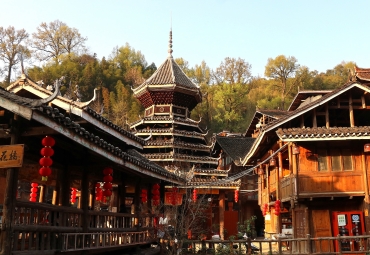Chestnut rose supports Guizhou's rural vitalization

Chestnut roses have extremely high vitamin C content when compared with other fruit. [Photo/ddcpc website]
At the turn from summer to autumn every year, wild chestnut roses can be seen in the mountains and valleys in Southwest China's Guizhou province.
Chestnut roses are widely distributed in Guizhou's mountains. The fruit has a sweet and sour taste and is extremely high in vitamin C content – in fact, more than 10 times higher than that of kiwi fruit.
As one of the province's main cash crops, the chestnut rose has become an irreplaceable plant for both medicine and food and is a supported industry in Guizhou's rural vitalization.

Workers pick fresh chestnut roses at a production workshop in Guizhou. [Photo/ddcpc website]
At the four chestnut rose industry economic belts in Liupanshui city, Qiannan Bouyei and Miao autonomous prefecture, Anshun city and Bijie city – as well as in 15 key chestnut rose planting counties – Guizhou has been improving the quality and efficiency of its chestnut rose planting. It's been doing so by guaranteeing seeds and seedlings, regulating management and increasing investment in scientific research.
Currently, Guizhou boasts the largest chestnut rose planting area in China. In 2021, Guizhou's chestnut rose cultivation area covered 2.1 million mu (140,000 hectares), producing 289,100 metric tons of fresh fruit and 161,400 tons of chestnut rose products with a total output value of 11.16 billion yuan ($1.56 billion).
After decades of artificial cultivation, the chestnut rose has become a featured mountain region industry with output value annually exceeding 10 billion yuan.
All rights Reserved. 京ICP备13028878号-8







 Overview
Overview Guiyang
Guiyang Guian New Area
Guian New Area Liupanshui
Liupanshui Anshun
Anshun Qianxinan
Qianxinan Qiandongnan
Qiandongnan Qiannan
Qiannan Zunyi
Zunyi Tongren
Tongren Bijie
Bijie Guizhou commits to culture preservation and rural vitalization
Guizhou commits to culture preservation and rural vitalization Guizhou voice at 2025 national two sessions
Guizhou voice at 2025 national two sessions Meet the 'genius moms' at Shenzhen cultural fair
Meet the 'genius moms' at Shenzhen cultural fair 

